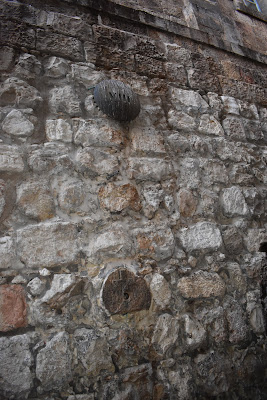The Shroud of Turin is approximately 425cm long and made of linen cloth, with a distinctive herringbone weave. It has been proven with recent carbon dating that the cloth was from the first century. The cloth bears the mysterious image of a man who has been scourged and crucified.
St. John’s Gospel describes the cloth as having been left behind in the tomb at the Resurrection. The impressions and bloodstains, though somewhat shadowy and unclear, reveal incredible detail and clarity when photographed.
Hundreds of scientific researchers of all faiths and backgrounds have studied the cloth, using a variety of analytic tools and methods. Now more than ever, the scientific evidence gained from the cloth itself, confirm the statements recorded in the Gospels - that Jesus was crucified on the cross, died and rose again.
Evidence gathered from the study of the Shroud of Turin provides more information about Jesus' crucifixion than ever before. Above is an example of how the crown of thorns may have looked. A crown of thorns made in this style would certainly have caused Jesus extensive pain and humiliation.
Above, based on the information gathered from the Shroud, is what a lash would have looked like. Jesus was most likely to have been lashed 100 times or more. The metal ends to the lashes most likely curved around His arms and legs in addition to His back, increasing His pain and suffering.
It was not common for people who were crucified to have their feet and their hands nailed to the crucifix. The nails pictured above are similar in size and shape to those that were used for Jesus' crucifixion. In Jesus' case, the nails were driven into the wrists and feet where nerves were located, which would have only added to His suffering.
An artist created a sculpture, converting the images seen in the Shroud into a 3D model. It is fascinating to look upon Jesus in life size form. I am sure that you will agree, from His expression, He looks peaceful, satisfied even.
Science has proven that the images appeared on the cloth at the moment of resurrection and were created by a momentary, extremely powerful burst of light. No light source, UV or otherwise, in today's technology and certainly not with the technology available in the first century, could create such an image. It was created by the power of God as final proof that Jesus rose from the dead.
Confronting us with the evidence of Jesus’ sufferings and death – as well as His Resurrection – the Shroud causes us to consider our answer to the question, “Do I believe that Christ has died, Christ is risen, Christ will come again?” And if your answer is yes, is Jesus welcome and living in your heart?















































